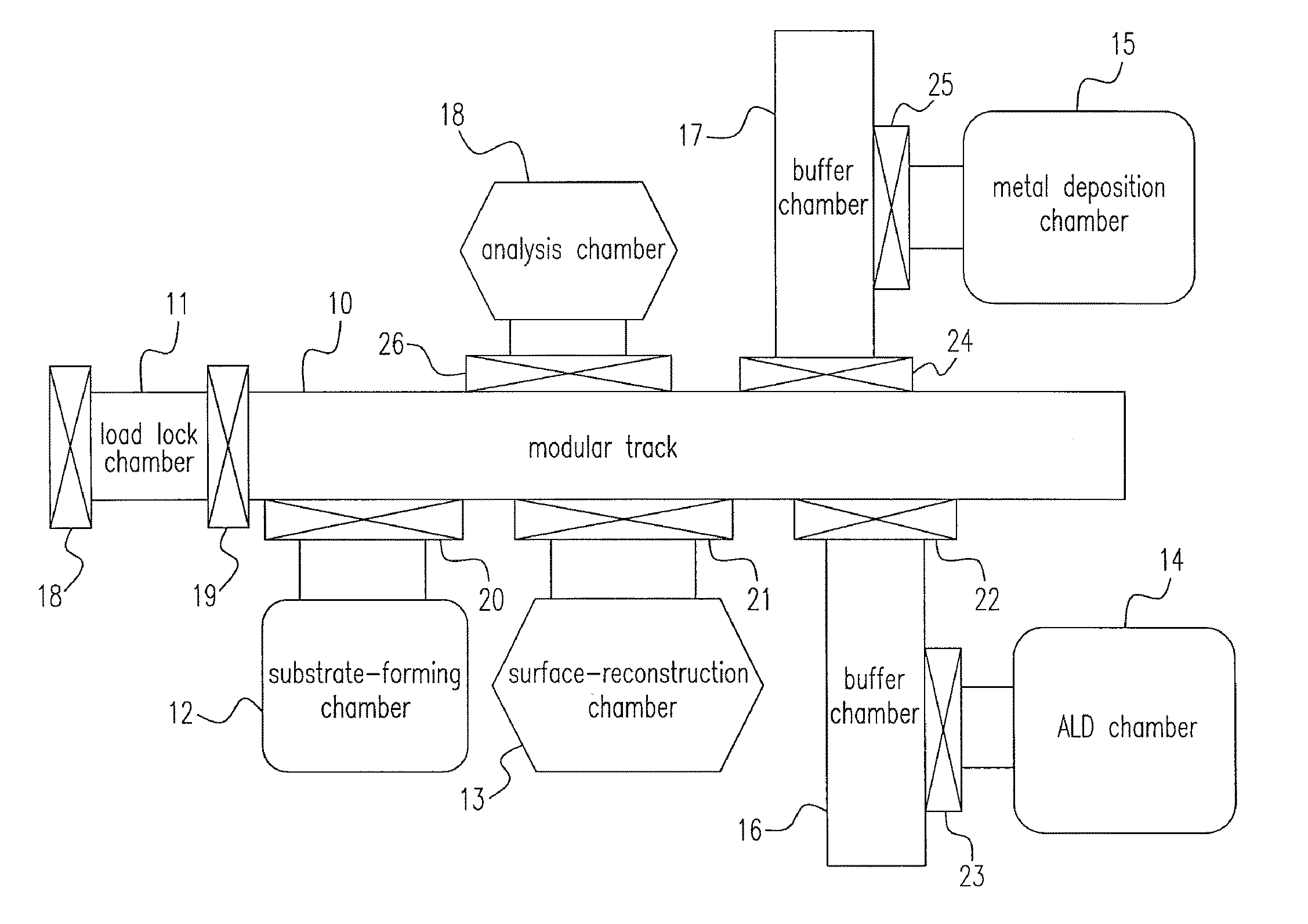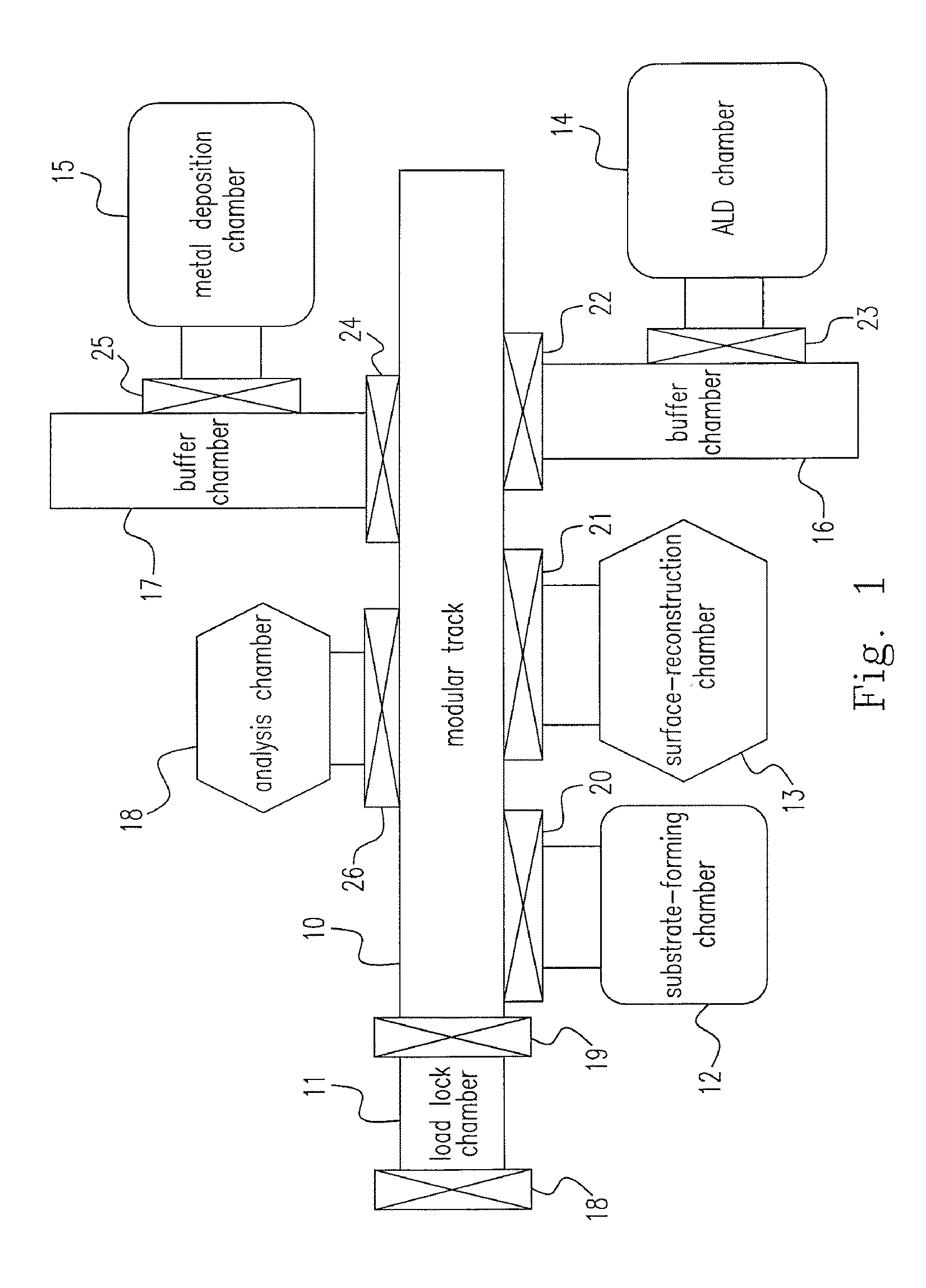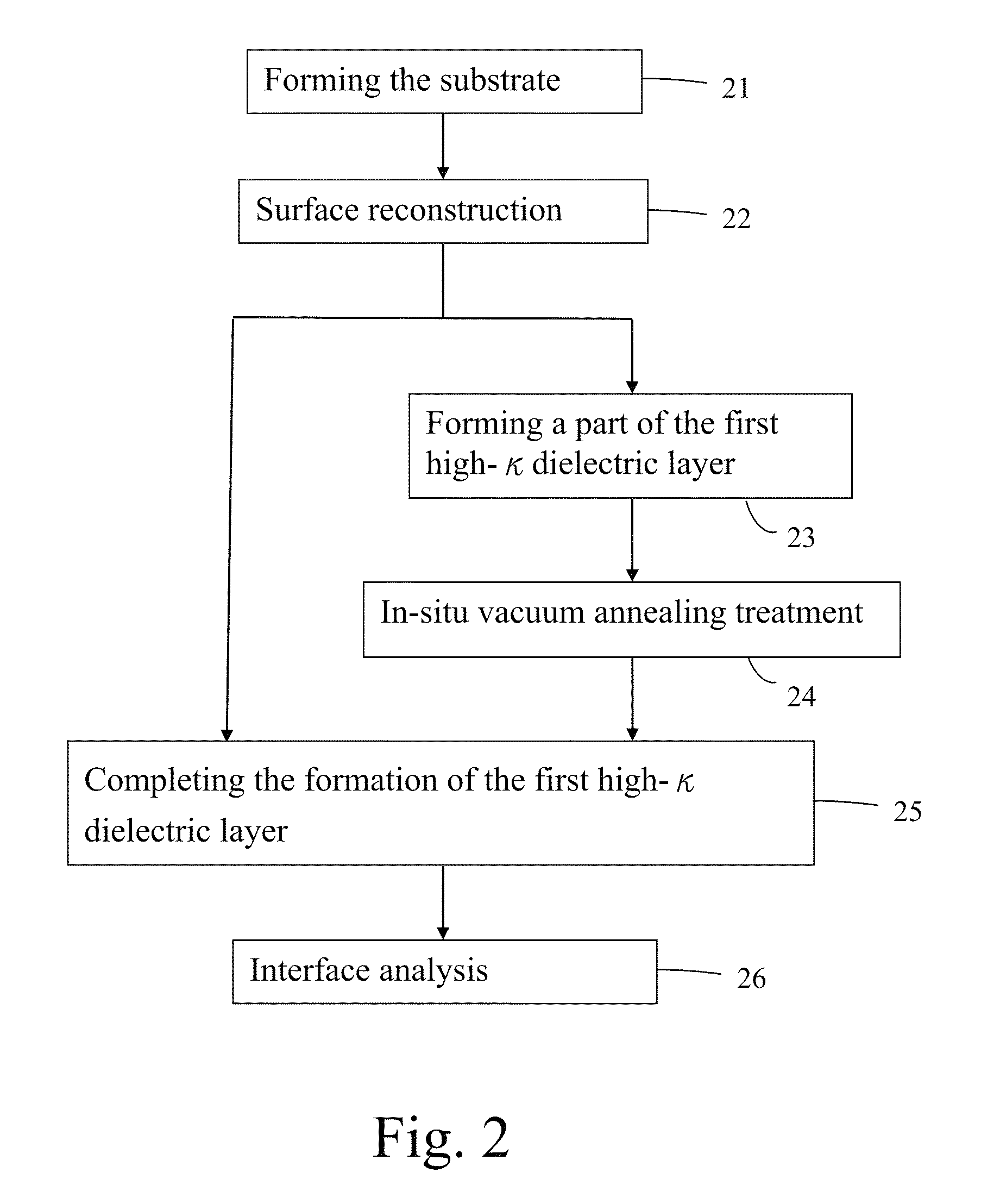Method and system for manufacturing semiconductor device
a semiconductor and manufacturing technology, applied in the field of method and system for manufacturing semiconductor devices, can solve the problems of unacceptably large electric leakage current, adverse effects on the electric characteristics, native oxides of iii-v semiconductors, etc., and achieve the effects of improving the density of defects at the interface (dit) and the leakage current, and improving the eo
- Summary
- Abstract
- Description
- Claims
- Application Information
AI Technical Summary
Benefits of technology
Problems solved by technology
Method used
Image
Examples
first embodiment
[0022]Please refer to FIG. 1, which is a diagram showing a semiconductor manufacturing system according to the present invention. The system is a multi-chamber system where all chambers are connected with a modular track 10 selectively via valves 18, 19, 20, 21, 22, 23, 24, 25 and 26. In the modular track 10 having a pressure ranged from 10−9 to 10−11 Torr, at least one wafer is transferred into / out of the respective chambers on a wafer stage by at least one wafer transfer arm (not shown). The system mainly includes chambers such as a load lock chamber 11 whose atmospheres are changeable between ultra high vacuum and atmospheric pressure, a substrate-forming chamber 12 for growing a substrate, and an atomic layer deposition (ALD) chamber 14 for depositing a first high-κ dielectric layer on the substrate by the ALD method. The substrate for semiconductor devices could be formed from silicon, compound III-V or II-VI materials, wherein a III-V group compound semiconductor material incl...
second embodiment
[0027]Alternatively, after Step 22, the samples could be in-situ transferred to the ALD chamber 14 for depositing a part of the first high-κ dielectric layer on the reconstructed surface of the substrate to a first thickness of about 0.15˜1.5 nm (Step 23), and then the samples are in-situ transferred back to the surface-reconstruction chamber 13 so as to perform an in-situ vacuum annealing treatment at a temperature in a range of 300 to 700° C., preferably 450 to 550° C., which is decided by the adopted material of the substrate, and a pressure of 10−7 Torr or less (Step 24). The annealed samples are subsequently in-situ transferred to the ALD chamber 14 for further depositing the rest part of the first high-κ dielectric layer to a desired thickness so as to complete the formation of the first high-κ dielectric layer (Step 25).
[0028]Please refer to FIG. 3, which is a flow chart showing a method for manufacturing a semiconductor device according to a third embodiment of the present ...
third embodiment
[0029]As an example of the third embodiment, an epitaxial compound semiconductor layer (e.g. the p- and n-type In0.53Ga0.47As layer with Be and Si dopants) is grown on single crystal compound semiconductor wafers (e.g. P+ and N+ epi-ready InP(001) wafers) so as to form the substrates (Step 31), and the wafers are in-situ transferred to the surface-reconstruction chamber 13 and heated up to ˜460° C. to obtain (4×2)-reconstructed In / Ga stabilized In0.53Ga0.47As(001) surfaces (Step 32). Then, samples are in-situ transferred to the ALD chamber 14 for the depositions of the second high-κ dielectric layer, i.e. ALD-HfO2 (Step 33), and the first high-κ dielectric layer, i.e. ALD-HfAlO (Step 35) on the formed substrate, wherein the hafnium-based HfAlO with high re-crystallization temperature is employed as the top oxide capping layer to prevent the poly-crystalline formation in the dielectric while providing sufficient high dielectric constant. It is known that HfO2 possesses much higher di...
PUM
| Property | Measurement | Unit |
|---|---|---|
| temperature | aaaaa | aaaaa |
| thickness | aaaaa | aaaaa |
| temperature | aaaaa | aaaaa |
Abstract
Description
Claims
Application Information
 Login to View More
Login to View More - R&D
- Intellectual Property
- Life Sciences
- Materials
- Tech Scout
- Unparalleled Data Quality
- Higher Quality Content
- 60% Fewer Hallucinations
Browse by: Latest US Patents, China's latest patents, Technical Efficacy Thesaurus, Application Domain, Technology Topic, Popular Technical Reports.
© 2025 PatSnap. All rights reserved.Legal|Privacy policy|Modern Slavery Act Transparency Statement|Sitemap|About US| Contact US: help@patsnap.com



